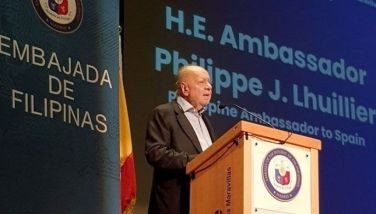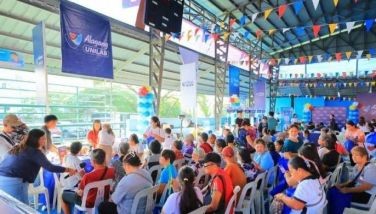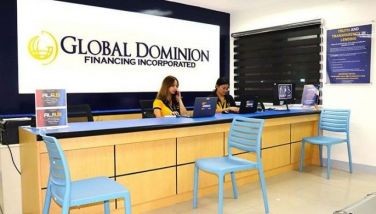UP @ World Wide Web: Experiences in e-learning
For generations, no one could envision any other mode of education than the classroom.
Then in 1995, Netscape brought the Internet within reach of ordinary people — and the World Wide Web was born. In the last decade, every sector has been radically altered by this development, including education. And the advent of e-learning has prompted even academics to talk in terms of new paradigms. At the forefront of this is the University of the Philippines (UP), the country’s national university.
The best of both worlds
For the past five years, UP has been exploring these new technologies. In 2003, the UP Diliman Interactive Learning Center (DILC) was created to provide the environment, technical support, and facilities for the development of digital instructional resources.
These instructional materials were particularly developed for courses considered “difficult,” such as math and the sciences. Interactive Learning Centers were also established in other UP campuses.
“Our students today are very different from students 10 years ago,” says Dr. Celia Adriano, DILC director. “They are very mobile, very techno-savvy, adept at multitasking. We need to match their abilities. The instructional materials we develop are not just texts that you read from page to page. The students are able to interact with them, and the technology allows it.”
Among the materials developed by the DILC are Macromedia Flash-based learning objects, little chunks of lessons on a concept. These learning objects engage a student’s interest through question-and-answer features with feedback mechanisms. And the cool graphics and animations don’t hurt.
Students can visit the DILC site (http://dilc.upd.edu.ph/) any time and view these materials as often as they need to. “Students enjoy them because they have greater control,” says Adriano, adding that they learn at their own pace. Some are fast learners who understand the concept after just one lecture; others take longer. How many teachers would be willing to explain the lesson twice, thrice, four times?”
Classroom sessions are also spiced up with the use of learning objects as teaching aids. The teacher is free to add her own examples or the students may view the learning objects beforehand and class sessions are transformed into interesting discussion forums, which facilitate learning.
The learning objects aren’t the only resources offered by DILC. Digital media files or podcasts of workshops and lectures by experts among the UP faculty can also be downloaded or streamed from the site. Among the podcasts available are the UP Centennial Lectures and the Social Science Online Lecture Series.
These resources can be accessed not just by UP students, but by everyone on the Web. “The purpose here is to be of service to all people,” says Adriano, who has received positive comments from people outside the country, including Americans.
Is UP ever going to go completely online? Adriano doesn’t think so. “We have the best of both worlds now,” she says.
Some university functions, such as enrollment, the processing of grades, academic calendars and some syllabi are available to everyone online. Instructional materials offered by the DILC encourage students’ independent learning. But face-to-face interactions remain important in the life of a residential university, like laboratory experiments, theater productions, and music recitals.
UP in cyberspace
However, one of UP’s constituent universities has no problem with living almost entirely in cyberspace. The UP Open University (http://www.upou.org/index.php), established in 1995, is a pioneer in online distance education (DE) and e-learning in the country.
What makes the UPOU distinct from the other UP campuses? “The difference is in our students and how they receive their education,” says Dr. Nemah Hermosa, vice chancellor for academic affairs. “All the courses are delivered online. The requirement for an online student is to have access to the Web and to know how to use the technology.”
A residential university has buildings with lecture halls, libraries, administrative offices, faculty rooms, and student tambayans. UPOU has a learning management system (LMS) or a virtual learning environment (VLE). Although similar to Yahoo or Google e-groups and sites such as Multiply and Friendster, Hermosa clarifies that a VLE has to be contained, i.e., limited to members of the class only.
Since 2007, the UPOU has been migrating to Moodle, an open-source LMS/VLE software. Upon enrollment, students can access myportal.upou.org and sign up for courses. Student profiles are displayed along with a record of their last login; they can even upload their pictures if they want to.
Faculty members also sign up to design their course materials, including the course guide, the modules and readings, even online quizzes. There are additional readings and resources, such as links to other sites, podcasts, learning objects, PowerPoint files, etc.
One distinct mark of the UPOU: no regular class hours. Although students follow the academic calendar, they are free to study the materials on their own time and at their own pace.
“Therefore, all DE students should be very self-disciplined, independent learners: self-motivated and able to manage their time well,” says Hermosa. “Some personalities may not be suited for DE, while some take to it like ducks to water. Still others take sometime to adjust.”
In the UPOU virtual campus, interactivity happens both asynchronously (as in discussion forums) and synchronously (as in chats). For each course, there are several forums during which the teacher asks questions on the assigned work and the students post their answers and comments.
Hermosa even includes a special forum in which students talk about non-course-related matters. Students flock to these forums to greet one another, share stories, and simply socialize. “This is what we call removing the ‘distance’ from distance education,” she says.
Here lies the challenge for the UPOU: how to make the LMS/VLE even more interactive. “The trend for Web 2.0 now is to move away from text and pictures and toward audio and video, since the tools for producing these have become more accessible,” says Alejo Espinosa of the UPOU Faculty of Information and Communication Studies.
Many files are “born digital,” such as pictures taken by a digital camera, and since almost everybody has a cellphone, a laptop, an MP3 player, a DVD player, or a USB flash drive, sharing things like class reports and papers has become much easier.
“Right now we’re developing a platform where all these social media interactions can take place, given that everybody is not just a consumer, but a producer as well. This is especially true in an academic context,” Espinosa says.
UP and the World Wide Web
“The first 10 years of the Web are just a warm-up stage,” says Espinosa. “We haven’t really seen its full potential. The next 10 years are going to be different.”
Everything — from downloading files to producing and exchanging digital media to social networking — will be much faster. “The next phase of the Web is going to be very mobile because the platform will be there to make these exchanges very easy. And when we have the capability to share files with the rest of the community and to respond quickly to exchanges, we will have a cycle: collaborative, communicative, and creative,” Espinosa says.
Then there is the phenomenon of the three-dimensional virtual world called Second Life (secondlife.com). Around 200 universities in the
“My question is: how can a Philippine university take advantage of Second Life in order to reach out to our audience? Through this, we can reach out to the OFWs, second-generation Filipino-Americans and the rest of the world. We can have a virtual UP campus in Second Life,” Espinosa says.
- Latest


























